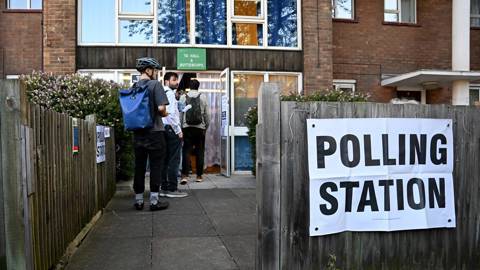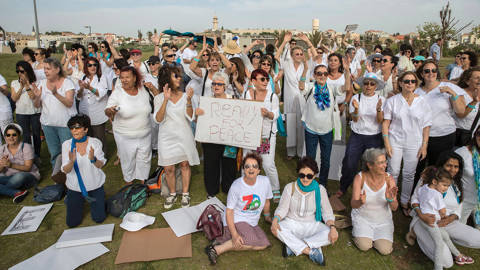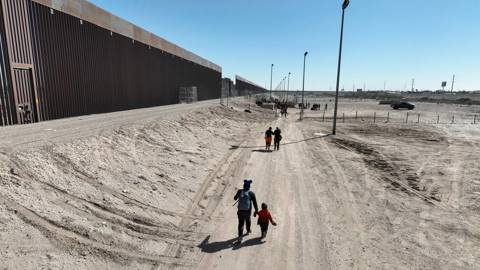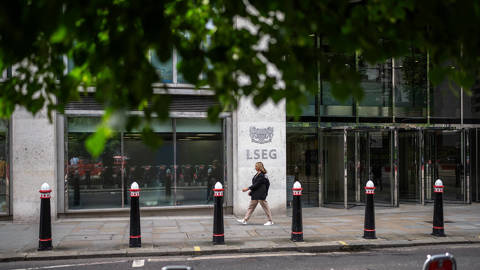The Kyoto Protocol, aimed at reducing greenhouse-gas emissions, is due to expire in 2012, with only dim prospects for an extension. But if private individuals and corporations begin to fund carbon-reduction projects now, efforts to prevent global warming may have some hope of succeeding.
MANILA – In 1997, the United Nations Framework Convention on Climate Change (UNFCCC) adopted the Kyoto Protocol – an agreement among signatory states to reduce greenhouse-gas emissions. In 2012, however, the Clean Development Mechanism, a system of carbon credits in which each credit represents a country’s right to emit one ton of carbon dioxide (CO2), is set to expire. While policymakers struggle to extend it, carbon-finance specialists are seeking market-driven alternatives. Progress on the issue has stalled: at the last two UNFCCC conferences in Copenhagen and Cancún, members failed to arrive at an agreement on emission cuts.
Reduction, or mitigation, of CO2 emissions is not easy. It is also expensive. The typical measures – carbon capture and sequestration (CCS), energy conservation, and greater reliance on renewable energy sources like solar and wind – are all costly enterprises, often out of reach for poorer countries, where air pollution can be a serious problem.
But recent climate science may offer hope. Research indicates that black carbon (the soot from inefficient combustion in stoves, fires, engines, etc.) belongs to a class of substances that have an extremely high global warming potential. In particular, black carbon absorbs sunlight and radiates heat, thereby melting ice and snow.
Black carbon in the atmosphere also causes respiratory ailments, as Asian cities such as Shanghai, Bangkok, and Manila have shown. Fine soot particles can penetrate the upper defenses of the respiratory tract and settle deep in the lungs. Children, the elderly, and people with heart and lung diseases are at highest risk.
These substances exacerbate climate change, but they linger in the air only for short periods and are easy to remove. Black-carbon reduction thus offers developing countries an opportunity to mitigate climate change at a fraction of the cost of full CO2 reduction, while providing cleaner air for their people, simply by avoiding soot formation in engines, stoves, and other combustion devices.
Moreover, Voluntary Emission Reduction (VER) credits are a potential new answer to the CO2 problem. VER credits are like carbon credits, but, rather than receiving funding from Kyoto Protocol sources, the private sector provides the financing. Driven by corporations and individuals tired of UN gridlock,VER credits offer an alternative way to pay for emission-reduction projects.
Consider, for example, a Thai auto rickshaw or a Philippine jeepney, forms of public transportation used widely in those countries. Typically, these vehicles’ owners simply do not have the money to fix them. With VER credits, however, it is possible to fund the repair or replacement of defective engines as long as the emission reductions can be measured accurately.
Several issues must be resolved to ensure the success of VER credits and the emission-reduction projects that they fund. First, procedures must be established that make these financial instruments acceptable in all countries. Second, there must be internationally verifiable measurement systems in each country that hosts a VER project. Finally, a technical standard on black carbon’s global-warming potential is essential. Without internationally verifiable accurate measurements, the credits will be worthless.
Everyone wants cleaner air, but the costs of reducing air pollution are prohibitive in many parts of the world. By providing a financial as well as an environmental incentive, VER projects make CO2 reduction more accessible to the world’s poorer citizens. Private individuals and corporations will have to initiate such projects; we can no longer afford to wait for the UNFCCC to do the job.









MANILA – In 1997, the United Nations Framework Convention on Climate Change (UNFCCC) adopted the Kyoto Protocol – an agreement among signatory states to reduce greenhouse-gas emissions. In 2012, however, the Clean Development Mechanism, a system of carbon credits in which each credit represents a country’s right to emit one ton of carbon dioxide (CO2), is set to expire. While policymakers struggle to extend it, carbon-finance specialists are seeking market-driven alternatives. Progress on the issue has stalled: at the last two UNFCCC conferences in Copenhagen and Cancún, members failed to arrive at an agreement on emission cuts.
Reduction, or mitigation, of CO2 emissions is not easy. It is also expensive. The typical measures – carbon capture and sequestration (CCS), energy conservation, and greater reliance on renewable energy sources like solar and wind – are all costly enterprises, often out of reach for poorer countries, where air pollution can be a serious problem.
But recent climate science may offer hope. Research indicates that black carbon (the soot from inefficient combustion in stoves, fires, engines, etc.) belongs to a class of substances that have an extremely high global warming potential. In particular, black carbon absorbs sunlight and radiates heat, thereby melting ice and snow.
Black carbon in the atmosphere also causes respiratory ailments, as Asian cities such as Shanghai, Bangkok, and Manila have shown. Fine soot particles can penetrate the upper defenses of the respiratory tract and settle deep in the lungs. Children, the elderly, and people with heart and lung diseases are at highest risk.
These substances exacerbate climate change, but they linger in the air only for short periods and are easy to remove. Black-carbon reduction thus offers developing countries an opportunity to mitigate climate change at a fraction of the cost of full CO2 reduction, while providing cleaner air for their people, simply by avoiding soot formation in engines, stoves, and other combustion devices.
Moreover, Voluntary Emission Reduction (VER) credits are a potential new answer to the CO2 problem. VER credits are like carbon credits, but, rather than receiving funding from Kyoto Protocol sources, the private sector provides the financing. Driven by corporations and individuals tired of UN gridlock,VER credits offer an alternative way to pay for emission-reduction projects.
SUMMER SALE: Save 40% on all new Digital or Digital Plus subscriptions
Subscribe now to gain greater access to Project Syndicate – including every commentary and our entire On Point suite of subscriber-exclusive content – starting at just $49.99
Subscribe Now
Consider, for example, a Thai auto rickshaw or a Philippine jeepney, forms of public transportation used widely in those countries. Typically, these vehicles’ owners simply do not have the money to fix them. With VER credits, however, it is possible to fund the repair or replacement of defective engines as long as the emission reductions can be measured accurately.
Several issues must be resolved to ensure the success of VER credits and the emission-reduction projects that they fund. First, procedures must be established that make these financial instruments acceptable in all countries. Second, there must be internationally verifiable measurement systems in each country that hosts a VER project. Finally, a technical standard on black carbon’s global-warming potential is essential. Without internationally verifiable accurate measurements, the credits will be worthless.
Everyone wants cleaner air, but the costs of reducing air pollution are prohibitive in many parts of the world. By providing a financial as well as an environmental incentive, VER projects make CO2 reduction more accessible to the world’s poorer citizens. Private individuals and corporations will have to initiate such projects; we can no longer afford to wait for the UNFCCC to do the job.